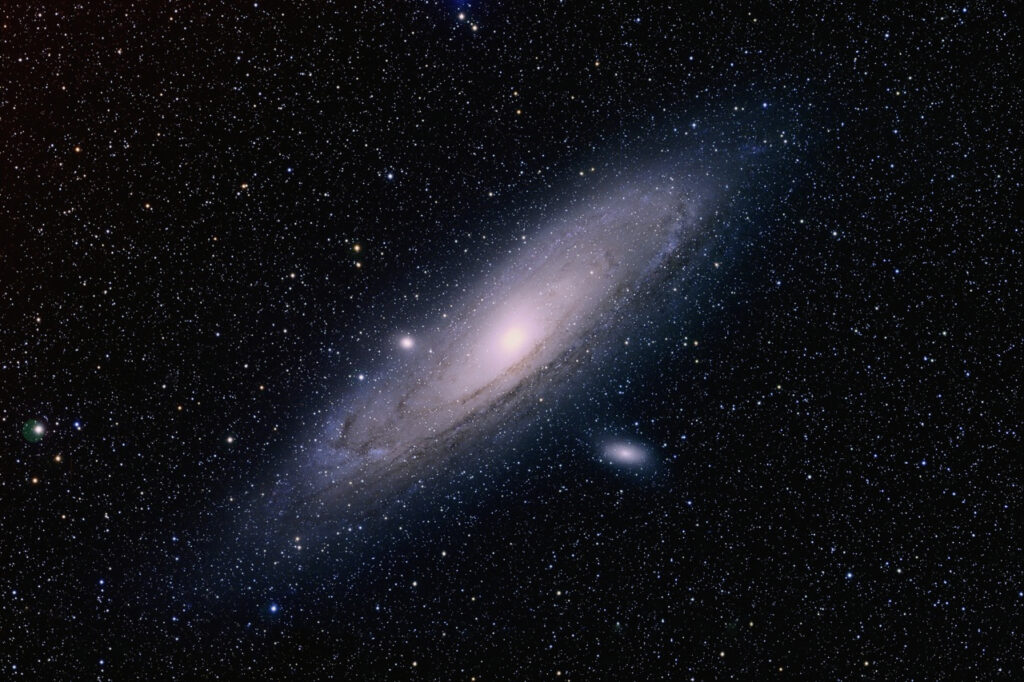The Andromeda Galaxy (M31) is an island of 400 billion stars 2.9 million light years from Earth. It is visible to the unaided eye under dark conditions away from city lights, making it one of the farthest objects that we can see with the unaided eye.
M31 is part of our "local group" of 60 or so neighboring galaxies. You can clearly see the dust lanes in the spiral arms of the galaxy in this image. These dust lanes contain the material out of which new stars are formed. It is the continual creation of new stars in the spiral arms that enables a rotating spiral galaxy to retain its shape for long periods of time (before the arms collapse into an elliptical galaxy).
M31 is of historic significance, since photographs of this object taken by Edwin Hubble in the 1920s with the 100" Hooker telescope at Mt. Wilson (the largest telescope in the world at the time) resolved individual stars, thereby proving that it was a giant island of countless stars rather than a gaseous nebula a comparatively short distance away in our Milky Way galaxy.
Hubble also detected Cepheid variable stars in M31. These are large stars that vary in brightness according to a precise cycle. Early in the 20th century it was shown that the "period" or light cycle of a Cepheid is directly proportional to its "absolute magnitude" (intrinsic luminosity), meaning that larger Cepheids pulsate more slowly. Astronomer Harlow Shapley would later discover that if the absolute magnitude of a Cepheid variable was known, and its "apparent" magnitude (how bright it appears in the sky) was calculated, the distance to the star could easily be computed using a "distance modulus table" that Shapley constructed. This remains the most accurate means of measuring the distances to stars and galaxies out to 100 million light years.
Hubble estimated M31's distance to be 900,000 light years, or about 30% of the actual distance. While this was inaccurate, it was still useful in demonstrating that M31 is a considerable distance from Earth, and well outside our Milky Way Galaxy.
Note the two satellite galaxies of M31 in this image. The small oval directly below the nucleus of M31 is the small elliptical galaxy M110. Directly to the left of the nucleus of M31 is a large, fuzzy white ball. This is elliptical galaxy M32. Both M32 and M110 are orbiting M31, in much the same way as the Moon orbits around the Earth.
The Andromeda Galaxy (M31)—a spiral galaxy in our "local group" of galaxies
Date Taken:October 27-29, 2014
Location Taken:New Mexico Skies Observatory
Conditions of Location: Equipment Used:Takahashi FSQ-106 apochromatic refractor telescope, SBIG STL11000 CCD camera
Processing Used:22 x 5 minutes luminance, 8 x 5 minutes red, green, and blue (total exposure time 4 hours), combined in Maxim and processed in Photoshop.
Distance from Location:2.9 million light years
Constellation:Andromeda
Other Link:

Very nice photos!! I took a look at the Andromeda galaxy through binoculars last night. Of course all I can see is a faint glow. The long-exposures you do really bring out a lot of detail.